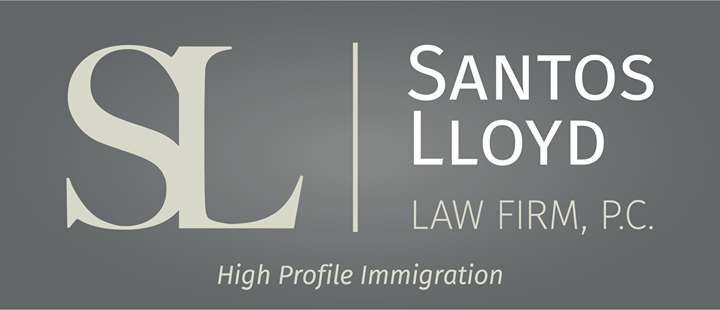Existem vistos de trabalho para influenciadores de mídia social?
Kris Quadros-Ragar • January 18, 2024
Click here to read this article in English
A resposta é: SIM!
Influenciadores de mídia social e produtores de conteúdo com um grande número de seguidores online podem se qualificar para um visto de trabalho temporário O-1 ou um green card EB-1, frequentemente chamados de "vistos de talento" ou "green cards de habilidade extraordinária".
O papel dos influenciadores de mídia social ganhou importância significativa nos últimos anos, tornando-se um elemento crucial nas estratégias de marketing de empresas e organizações em todo o mundo. Com uma oportunidade de mercado total superior a US$ 14 bilhões em várias plataformas de mídia social, há uma riqueza de oportunidades de emprego disponíveis para influenciadores de mídia social. Em reconhecimento à sua crescente influência e demanda, a política de imigração dos Estados Unidos começou a reconhecer os influenciadores de mídia social como uma profissão legítima, tornando-os elegíveis para vistos de trabalho temporários e green cards.
Uma maneira de provar que você é um influenciador excepcional de mídia social é apresentar evidências dos acordos de marca dos quais você fez parte. Quanto mais famosas e respeitadas forem as empresas, melhor para o seu caso. Mas mesmo se você trabalhou com empresas menores, ainda conta se você ganhou uma boa quantia de dinheiro. O tamanho da sua audiência, visibilidade e número de seguidores também são importantes, pois demonstram sua influência e potencial de ganho por meio do seu público.
Rota do Visto de Não-Imigrante O-1B:
Para solicitar o visto de não-imigrante O-1B, um visto de trabalho temporário, você deve ter uma oferta de emprego ou um agente nos Estados Unidos que atuará como seu patrocinador. Agentes podem ser indivíduos ou empresas que o representarão em vários projetos e acordos de marca nos quais você estará envolvido nos Estados Unidos. Além de apresentar a aplicação O-1B, você deve fornecer documentação de suporte, que normalmente inclui memorandos de acordo, contratos e provas de que continuará envolvido em projetos e oportunidades semelhantes durante a sua estadia.
Rota do EB-1A:
A rota do EB-1A oferece uma opção mais permanente para influenciadores de mídia social interessados em viver e trabalhar nos Estados Unidos. Ao contrário do visto O-1B, o visto EB-1A permite que o solicitante obtenha residência permanente nos EUA, comumente conhecida como green card. Como resultado, a categoria EB-1A possui um padrão de "habilidade extraordinária" muito mais elevado do que o visto O-1B. Portanto, é importante que os candidatos consultem um advogado experiente para avaliar sua experiência e realizações antes de solicitar um EB-1A.
Independentemente de considerar um visto O-1B ou um visto EB-1A, você deve estar preparado para reunir documentação importante para apoiar sua aplicação. Isso inclui evidências de altos ganhos em trabalhos anteriores, prova de colaborações com marcas e organizações renomadas, documentação de sua participação ativa em eventos prestigiosos, cobertura midiática destacando suas realizações, quaisquer prêmios recebidos e cartas de recomendação de outros influenciadores de mídia social respeitados ou figuras notáveis em sua indústria. Esses documentos desempenham um papel vital no fortalecimento da sua aplicação de visto e na demonstração de suas qualificações e realizações.
Por favor, observe que os influenciadores de mídia social que vêm para os Estados Unidos com um visto de turista (conhecido como visto B1/B2) e se envolvem em atividades estritamente proibidas por esse tipo de visto podem enfrentar sérias consequências se as informações se tornarem conhecidas pela imigração, como a possível proibição de entrada nos Estados Unidos e outras repercussões significativas ao reentrar. Por esse motivo, é crucial para os influenciadores de mídia social consultar um advogado de imigração experiente para ajudá-los a navegar no processo de visto e encontrar a classificação de visto adequada.
Se você acredita que pode se qualificar para qualquer um desses vistos, entre em contato com nosso escritório.
Este blog não se destina a fornecer aconselhamento jurídico e nada aqui deve ser interpretado como estabelecimento de um relacionamento advogado-cliente. Por favor, agende uma consulta com um advogado de imigração antes de agir com base em qualquer informação lida aqui.

Once you have connected with a college program, have been admitted to the school, and deemed eligible to compete athletically, you will need to secure an F-1 student visa in order to actually attend your new college and begin your time as a student athlete. The first step in the visa process is to receive your Form I-2

For many talented athletes around the world, U.S. college athletics represent a remarkable opportunity to combine elite athletic competition with higher education. In sports such as basketball, soccer, track and field, and tennis, among others, hundreds of colleges and universities across the United States offer struct

Under the new regulation, if a person filed or files Form I-589, Application for Asylum and for Withholding of Removal after October 1, 2024, and the application remains pending with USCIS for 365 days, the applicant must pay an Annual Asylum Fee (AAF) on the one-year anniversary of his or her filing date.



